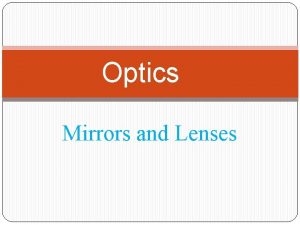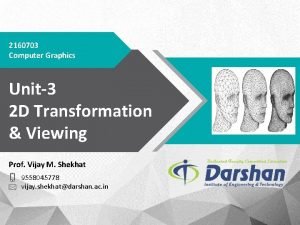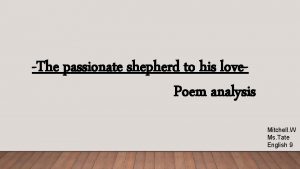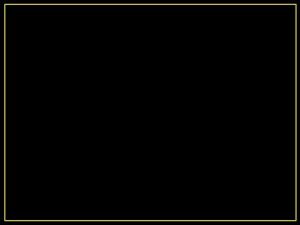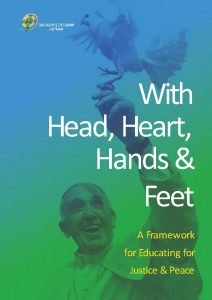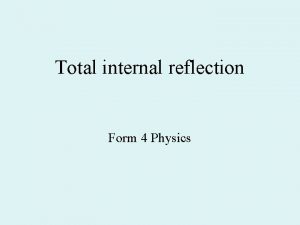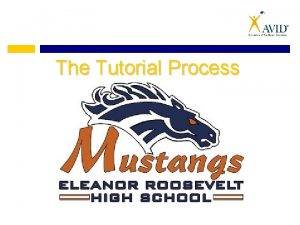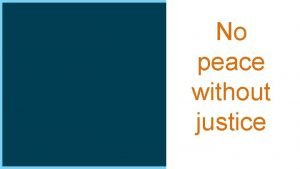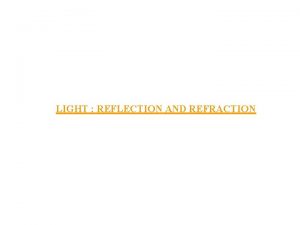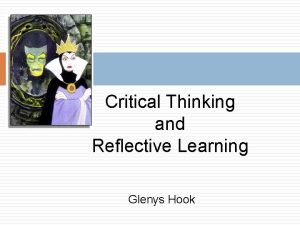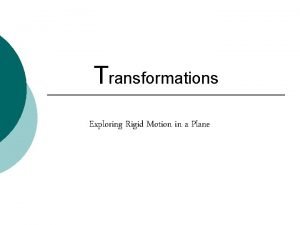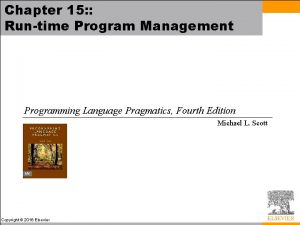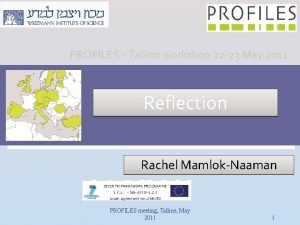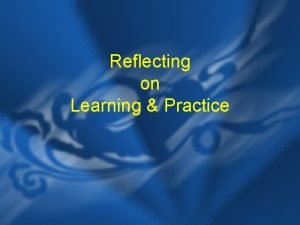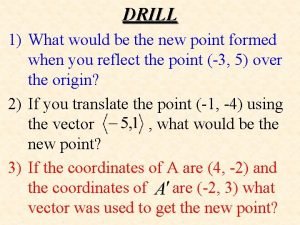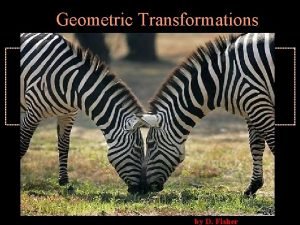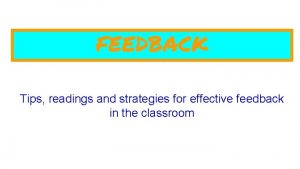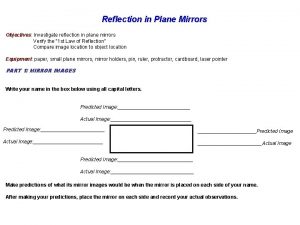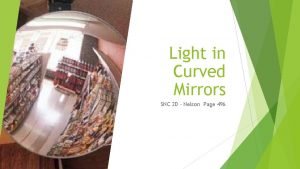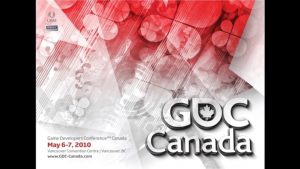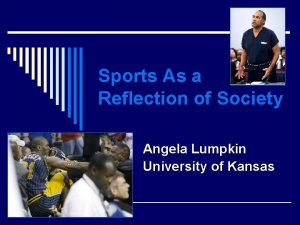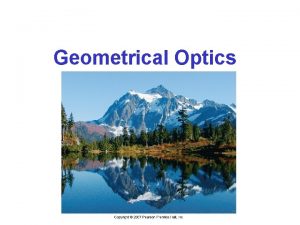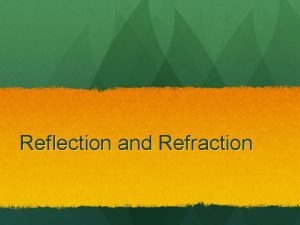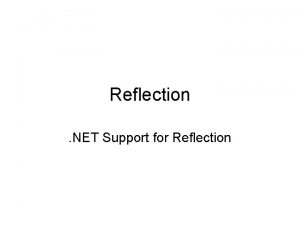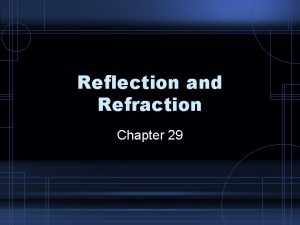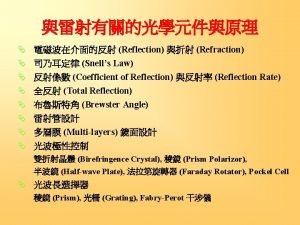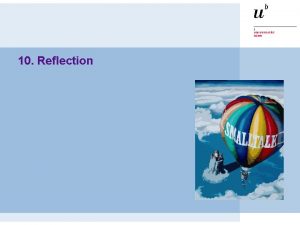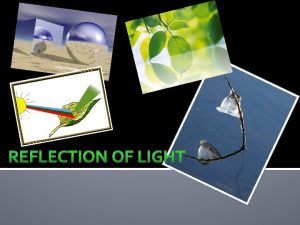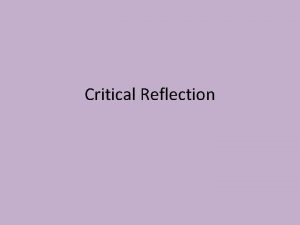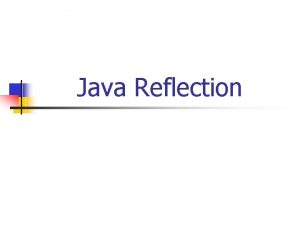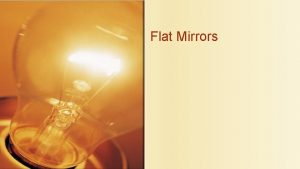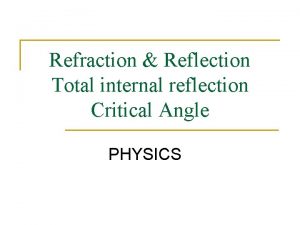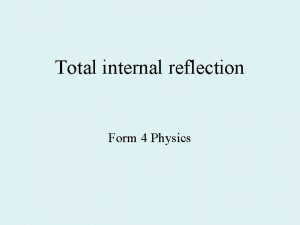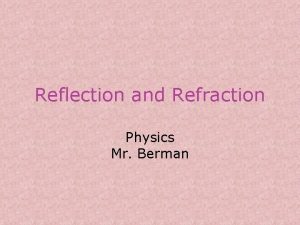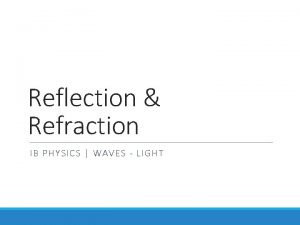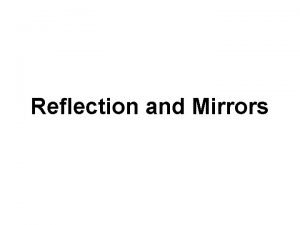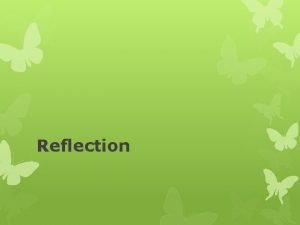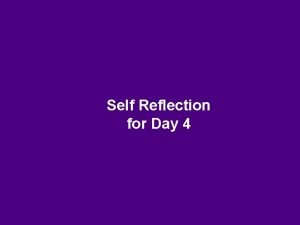KS 4 Physics Reflection 1 of 27 20



























- Slides: 27

KS 4 Physics Reflection 1 of 27 20 © Boardworks Ltd 2005 2004

Contents Reflection Ray diagrams Reflection Plane mirrors Curved mirrors Summary activities 1 20 2 of 27 © Boardworks Ltd 2005 2004

Beams of light travel in straight lines. We can see this when we look beams of light such as search lights, laser beams, car head lights and torches. This is why we can not see around corners and why shadows are formed. 1 20 3 of 27 © Boardworks Ltd 2005 2004

Ray boxes We can investigate light by using ray boxes in a darkened room. Ray boxes produced a narrow beam of light (called a light ray) which makes it easier to study effects such as reflection and refraction. 1 20 4 of 27 © Boardworks Ltd 2005 2004

Ray diagrams When we draw a diagram of an experiment using a ray box we represent the beam of light using a straight line. An arrow is placed on the beam showing the direction the light is travelling in. When we draw a ray diagram we must: l Use a sharp pencil l Draw clearly and accurately 1 20 5 of 27 © Boardworks Ltd 2005 2004

The normal When we draw a ray diagram and a ray of light hits the surface of an object we add a line to the diagram called the normal. The normal is drawn at right angles (90°) to the surface the ray has hit. The normal is drawn in as we can measure the angle between the ray and the normal 1 20 6 of 27 © Boardworks Ltd 2005 2004

Contents Reflection Ray diagrams Reflection Plane mirrors Curved mirrors Summary activities 1 20 7 of 27 © Boardworks Ltd 2005 2004

Seeing luminous objects A luminous object gives out light and can also be called a light source. How does light from a light bulb and other light sources reach your eye? Light travels in a straight line directly into your eye. 1 20 8 of 27 © Boardworks Ltd 2005 2004

Seeing non-luminous objects Objects that do not give out light are non-luminous. How does your eye see non-luminous objects such as a book? Light from the light source strikes the book and some of the light is reflected into your eye. 1 20 9 of 27 © Boardworks Ltd 2005 2004

Transparent, opaque and translucent Transparent materials, such as glass, let nearly all the light that falls on them pass through. Very little light is reflected or absorbed by the material. Opaque materials, such as wood, do not let any of the light that falls on them pass through. All the light is either reflected or absorbed by the wood. Translucent materials, such as frosted glass, let some of the light that falls on them pass through. The rest of the light is reflected or absorbed by the material. 1 10 ofof 20 27 © Boardworks Ltd 2005 2004

Shiny surfaces reflect a lot more of the light that falls on them than matt surfaces. They often look brighter than surrounding objects as more of the light falling on them is reflected into our eye. You can often also see reflections of other objects on their surface. Mirrors are pieces of glass with a coating of silver on one side. The silver reflects the light passing through the glass. If the surface of the silver is flat we are able to see reflected images clearly, because the light from them is reflected by the mirror into our eyes. 1 11 ofof 20 27 © Boardworks Ltd 2005 2004

Types of mirror When we draw a ray diagram we represent a mirror by drawing a line with dashes on the silvered (non-shiny) side. Most mirrors are flat and these are called plane mirrors. They give non-distorted lifelike images. 1 12 ofof 20 27 A plane mirror Some mirrors are curved. These give distorted images. A concave mirror If a mirror curves inwards then it is a concave mirror; if it curves outwards it is a convex mirror. A convex mirror © Boardworks Ltd 2005 2004

Contents Reflection Ray diagrams Reflection Plane mirrors Curved mirrors Summary activities 1 13 ofof 20 27 © Boardworks Ltd 2005 2004

Law of reflection Incident ray i r Reflected ray angle of incidence (i) = angle of reflection (r) This is called the law of reflection and is true for any type of wave being reflected from a surface. 1 14 ofof 20 27 © Boardworks Ltd 2005 2004

The periscope By positioning two plane mirrors at 45° to each other at either end of a tube we can make a periscope. Periscopes are used in submarines to see what is on the surface of the water from underwater. 1 15 ofof 20 27 © Boardworks Ltd 2005 2004

Lateral inversion When you look at some writing in a mirror you will notice that it appears backwards. We can work out what is happening by drawing a ray diagram. The light rays swap over when they are reflected. This causes the image to appear laterally inverted (backwards) when compared to the original object. 1 16 ofof 20 27 © Boardworks Ltd 2005 2004

Virtual images When you look at a mirror you see a virtual image that appears to be behind the mirror. The image appears to be the same size as the original object and the same distance behind the mirror as the object is from the mirror. 1 17 ofof 20 27 distance object distance virtual image © Boardworks Ltd 2005 2004

Contents Reflection Ray diagrams Reflection Plane mirrors Curved mirrors Summary activities 1 18 ofof 20 27 © Boardworks Ltd 2005 2004

Concave mirrors reflect rays of light to a focal point (F). Concave mirrors are converging mirrors, as the rays of light converge to a focus. If a light source is placed at the focus they produce a beam of parallel light rays. F f The distance between the mirror and the focal point is called the focal length (ƒ). The more curved the mirror is the closer the focus is to the lens. 1 19 ofof 20 27 © Boardworks Ltd 2005 2004

Focal length of concave mirrors Finding of a concave mirror. Use a the rulermirror to Hold Chose athe distant measure in the other object (to get distance between hand move parallel rays of the lens and the itlight). closer to the screen this is screen- until a the focal clearlength image(ƒ). appears. 1 20 ofof 20 27 ƒ Hold a plain white screen in one hand. © Boardworks Ltd 2005 2004

Uses of concave mirrors Concave reflectors are used to focus signals from distant satellites. Concave mirrors are used in allowing them to be more powerful for their size. 1 21 ofof 20 27 © Boardworks Ltd 2005 2004

Convex mirrors reflect rays of light away from a focal point. Convex mirrors are diverging mirrors. The parallel are reflected so they appear to have come from a spot called the focus. 1 22 ofof 20 27 F f © Boardworks Ltd 2005 2004

Uses of convex mirrors Convex mirrors are often used to see around corners, here in a busy corridor. 1 23 ofof 20 27 The rear view mirror in a car is a convex mirror to widen the field of view. © Boardworks Ltd 2005 2004

Contents Reflection Ray diagrams Reflection Plane mirrors Curved mirrors Summary activities 1 24 ofof 20 27 © Boardworks Ltd 2005 2004

Glossary l concave mirror – A mirror that curves in at the centre. l convex mirror – A mirror that curves out at the centre. l incident ray – The light ray that strikes a surface. l law of reflection – When light is reflected, the angle of incidence equals the angle of reflection. l lateral inversion – The reversal of an image in a mirror, which means that the left-hand side appears on the right and the right-hand side appears on the left. l normal – A line on a ray diagram drawn at right angles to the surface being hit by the light ray. l plane mirror – A mirror with a flat surface. l reflected ray – The light ray bounced back from a surface. l ray diagram – A diagram that shows what happens to light rays during processes such as reflection. 1 25 ofof 20 27 © Boardworks Ltd 2005 2004

Anagrams 1 26 ofof 20 27 © Boardworks Ltd 2005 2004

Multiple-choice quiz 1 27 ofof 20 27 © Boardworks Ltd 2005 2004
 Diffuse reflection vs regular reflection
Diffuse reflection vs regular reflection Ib physics ia ideas mechanics
Ib physics ia ideas mechanics Why does it happen
Why does it happen University physics with modern physics fifteenth edition
University physics with modern physics fifteenth edition Reflection and shearing in computer graphics
Reflection and shearing in computer graphics The passionate shepherd to his love reflection
The passionate shepherd to his love reflection John 12:37-50
John 12:37-50 Hands heart head
Hands heart head Fisheye view total internal reflection
Fisheye view total internal reflection Revalidation reflection examples for nurses
Revalidation reflection examples for nurses Avid tutorial reflection
Avid tutorial reflection Short reflection
Short reflection Refraction through a rectangular glass slab
Refraction through a rectangular glass slab Activity 2: reflection
Activity 2: reflection Driscoll's model of reflection 1994
Driscoll's model of reflection 1994 How can δabc be mapped to δxyz?
How can δabc be mapped to δxyz? System.reflection.portableexecutable
System.reflection.portableexecutable Reflection vocabulary
Reflection vocabulary Work reflections for meetings
Work reflections for meetings Students reflection on their learning sample
Students reflection on their learning sample Which image has reflectional rotational and point symmetry
Which image has reflectional rotational and point symmetry Geometric sequence reflection
Geometric sequence reflection How to start a feedback
How to start a feedback Investigate reflection
Investigate reflection Concave mirror ray diagram salt
Concave mirror ray diagram salt Senior reflection examples
Senior reflection examples Sport is a reflection of society
Sport is a reflection of society Light reflection
Light reflection
